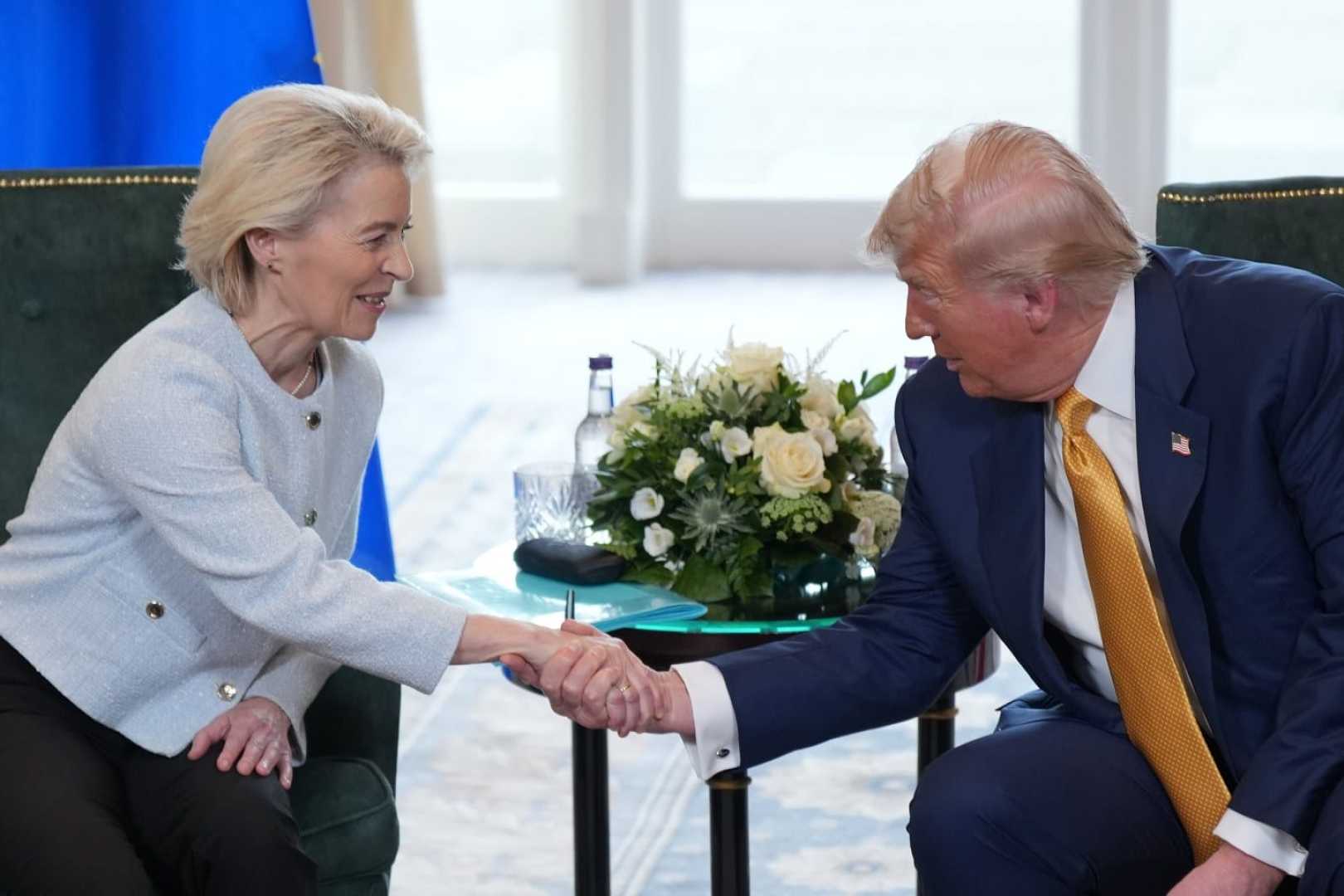Business
US and EU Reach Trade Deal Amid Tariff Tensions

Washington, D.C. — The United States and the European Union (EU) announced a preliminary trade deal aimed at averting a potential 30% tariff on EU imports as suggested by President Donald Trump.
This agreement comes after Trump argued that higher tariffs were necessary to address the significant trade deficits between the U.S. and the EU. Economists, however, have disputed this, claiming that EU tariffs were already low, and other factors contribute more to the trade imbalance.
On July 27, Trump revealed that under the new arrangement, a 15% tariff will apply to most EU imports. “One reason the US runs a large bilateral trade deficit with Europe is that we have a large multilateral deficit overall,” said Professor Johnson of the University of Notre Dame.
During the discussion about the agreement, Trump informed that EU representatives agreed to purchase $750 billion in U.S. energy and invest $600 billion into the U.S. economy.
While Trump emphasized that the trade deal would allow U.S. goods to enter EU countries with a 0% tariff rate, European Commissioner for Trade Maroš Šefčovič stated that both sides would apply a zero tariff rate on a “significant list of goods.”
The details of this list are still pending. It reportedly includes aircraft, parts, some agricultural goods, and certain chemicals.
Scholars and economists maintain that raising tariffs might not effectively reduce the trade deficit. A report from the Congressional Research Service noted that many economists attribute U.S. trade deficits to macroeconomic variables, such as consumer spending habits.
Trump’s trade threats against the EU and other nations have incited a range of tensions. Brazilian tariffs increased from 10% to 50%, and Canada is facing a jump from 25% to 35%.
Despite the administration’s optimism, the new tariffs and ongoing trade discussions have prompted considerable concern among businesses in the affected countries. Schumer warned of job growth uncertainties attributed to Trump’s tariffs and stated, “the chickens are coming home to roost on Donald Trump’s destructive trade war.”
As industry leaders assess the impact of these changes, many are seeking negotiated solutions to minimize disruption. The evolving nature of these trade negotiations illustrates the complexities of modern international trade relations, suggesting that future developments could reshape this landscape further.












